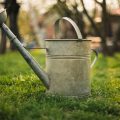Introduction to Rainwater Harvesting in the UK
Rainwater harvesting is an increasingly popular and practical approach for British gardeners who wish to create more eco-friendly outdoor spaces. In a country celebrated for its lush greenery and frequent rainfall, harnessing this natural resource makes perfect sense. By collecting and storing rainwater, UK gardeners can reduce their reliance on mains water, conserve energy, and help protect the environment. This technique not only supports sustainable gardening practices but also ensures that plants receive naturally soft, chemical-free water that is ideal for their health and growth. As climate change brings unpredictable weather patterns, adopting rainwater harvesting methods offers British gardens a reliable source of water throughout the year, while also helping to manage excess surface water and prevent localised flooding. Embracing these techniques is a meaningful step towards greener living and a more resilient garden ecosystem in the unique British climate.
Understanding British Weather Patterns
The UK is renowned for its unpredictable weather and frequent rainfall, making it a unique environment for rainwater harvesting in home gardens. Knowing the typical rainfall patterns is crucial to designing an effective eco-friendly water management system. Most regions experience rainfall throughout the year, but amounts vary significantly between areas. For instance, western parts such as Cumbria and Wales receive much more annual rainfall compared to the drier southeast. The table below summarises average monthly rainfall in different UK regions:
| Region | Average Monthly Rainfall (mm) |
|---|---|
| North West | 100-130 |
| South East | 40-60 |
| Wales | 110-140 |
| East Anglia | 35-55 |
This variation means that gardeners in wetter regions can collect more rainwater, while those in drier areas must make the most of occasional downpours. In addition, British weather often brings short, heavy showers rather than prolonged rain, so harvesting systems should be designed to capture water quickly and efficiently. Understanding these patterns helps you choose the right storage capacity and ensures your garden remains hydrated even during dry spells. Ultimately, adapting your rainwater harvesting technique to local weather supports both water conservation and plant health in your British garden.

3. Simple Rainwater Collection Methods
Setting up a rainwater harvesting system in your British garden can be surprisingly straightforward. One of the most popular and practical methods is installing a water butt or rain barrel. These containers are designed to collect rainwater directly from your home’s downpipes, making use of the frequent rainfall across the UK. Water butts and barrels are widely available at local garden centres and DIY shops, often made from durable recycled plastic to suit eco-friendly gardens.
Choosing the Right Container
Water butts come in various sizes, typically holding between 100 to 250 litres, so you can choose one that fits your available space. For smaller gardens or patios, slimline models are ideal as they tuck neatly against walls or sheds. Larger gardens might benefit from connecting multiple barrels together using simple linking kits, which are easy to install with basic household tools.
Materials Commonly Found in UK Homes
If you prefer a DIY approach, you can repurpose items like old dustbins, food-grade drums, or even large plastic containers. Ensure any container used has a secure lid to prevent debris and insects from entering. Adding a tap near the base makes it easy to fill watering cans or attach hoses for convenient garden use.
Installation Tips
Position your water butt or barrel under a downpipe to maximise water collection. Many homes in the UK have guttering systems that can be easily adapted with a diverter kit—these are inexpensive and help direct rainwater straight into your chosen container. Remember to place the barrel on a raised stand or bricks for easy access to the tap and improved water flow.
With these simple collection methods, British gardeners can make the most of natural rainfall, reduce mains water usage, and support a more sustainable garden environment.
4. DIY Rainwater Harvesting Systems
Creating your own rainwater harvesting system at home is both cost-effective and rewarding. Most British houses are well-suited for a simple, homemade setup. Here’s a step-by-step guide tailored for UK gardens and homes:
Step 1: Assess Your Roof and Guttering
First, check the condition of your roof and existing guttering. Make sure gutters are clean and properly angled to direct water towards your chosen collection point. For older British houses, you may need to replace or adjust traditional cast iron or plastic gutters to ensure smooth water flow.
Step 2: Choose the Right Water Butt
Select a water butt that fits your available space and garden needs. Slimline butts are ideal for narrow alleys common in terraced homes, while larger barrels suit detached or semi-detached properties with more space.
| Water Butt Type | Ideal For |
|---|---|
| Slimline | Small gardens, side alleys |
| Standard Barrel | Larger lawns, vegetable patches |
Step 3: Install Diverters and Filters
Add a rainwater diverter kit to your downpipe. This directs excess water into the butt once it’s full, preventing overflow. In the UK, leaf guards or mesh filters are essential to keep out debris like moss or autumn leaves. Fit these at the top of the butt or inside the gutter.
Step 4: Position and Secure Your System
Place your water butt on a firm, level base—many British gardeners use paving slabs for this purpose. Ensure it’s close to a downpipe but still accessible for watering cans or hoses. Secure the butt with straps if it’s in an exposed spot prone to wind.
Step 5: Maintenance Tips
- Check filters monthly, especially after heavy rainfall or storms.
- Empty and clean the water butt every spring to prevent algae build-up.
- In winter, disconnect diverters if freezing is likely, as ice can damage fittings.
This straightforward DIY approach allows any UK gardener to harvest rainwater efficiently using affordable materials and locally available tools.
5. Using Harvested Rainwater in the Garden
Making the most of your collected rainwater is not only eco-friendly but also ideal for nurturing a truly British garden. Here are some best practices for watering local plants and lawns, along with tips on conserving water throughout the gardening year.
Best Practices for Watering British Plants
Most native British plants thrive with less frequent but deep watering. Early morning or late evening is the best time to use harvested rainwater, as this minimises evaporation and ensures roots absorb more moisture. When using a watering can or hose, aim directly at the base of plants rather than wetting the leaves—this helps prevent fungal diseases common in the UK’s damp climate.
Caring for Lawns with Rainwater
British lawns often need less water than you might think. During dry spells, one thorough soak each week is better than daily light sprinklings. Use a sprinkler attached to your water butt if possible, and try to water before 9am or after 6pm to avoid losing water to evaporation. Allowing grass to grow slightly longer during summer also helps retain moisture in the soil.
Water Conservation Tips
Mulching borders with bark chips or compost reduces surface evaporation and keeps roots cool. Grouping pots together creates a microclimate that conserves moisture. Consider installing drip irrigation systems from your water butt for slow, direct watering—these are perfect for thirsty vegetables and flower beds. Always check the weather forecast and skip watering if rain is due, making every drop of collected rainwater count.
A Balanced Approach
By adapting these mindful watering techniques, you’ll help your garden flourish while reducing mains water consumption—a win for both your plants and the environment. Using harvested rainwater connects you to natural cycles and supports a sustainable gardening tradition beloved throughout Britain.
6. Maintenance and Legal Considerations
Simple Upkeep Tips for Your Rainwater Harvesting System
To keep your rainwater harvesting system running smoothly in your British garden, a bit of regular care goes a long way. Check your gutters and downpipes every few months, especially after heavy rain or autumn leaf fall, to prevent blockages. Clean out filters and debris screens regularly so that water flows freely and stays clear. Inspect water storage containers for any cracks or leaks, and ensure the lids are secure to keep out insects and wildlife. If you use a pump, follow the manufacturers instructions for annual servicing. These simple steps help maintain both water quality and system efficiency throughout the year.
Understanding UK Regulations and Guidelines
In the UK, rainwater harvesting for gardening is widely encouraged as an eco-friendly practice, but there are some rules to bear in mind. Using collected rainwater for watering plants is generally permitted without restriction; however, if you plan to use harvested rainwater indoors (for example, flushing toilets), more stringent regulations apply under the Water Supply (Water Fittings) Regulations 1999 to protect public health. It’s important never to connect rainwater systems directly to mains drinking water supplies. If you live in a listed building or conservation area, check with your local council before installing large tanks or significant infrastructure, as planning permissions may be required. Lastly, always ensure your installation does not cause overflow onto neighbouring properties, which could lead to disputes or legal issues.
Summary
With basic maintenance and by following UK guidelines, you can safely harvest rainwater and support a greener British garden. Keeping up with system checks and being aware of local rules ensures your setup remains safe, efficient, and environmentally friendly.


